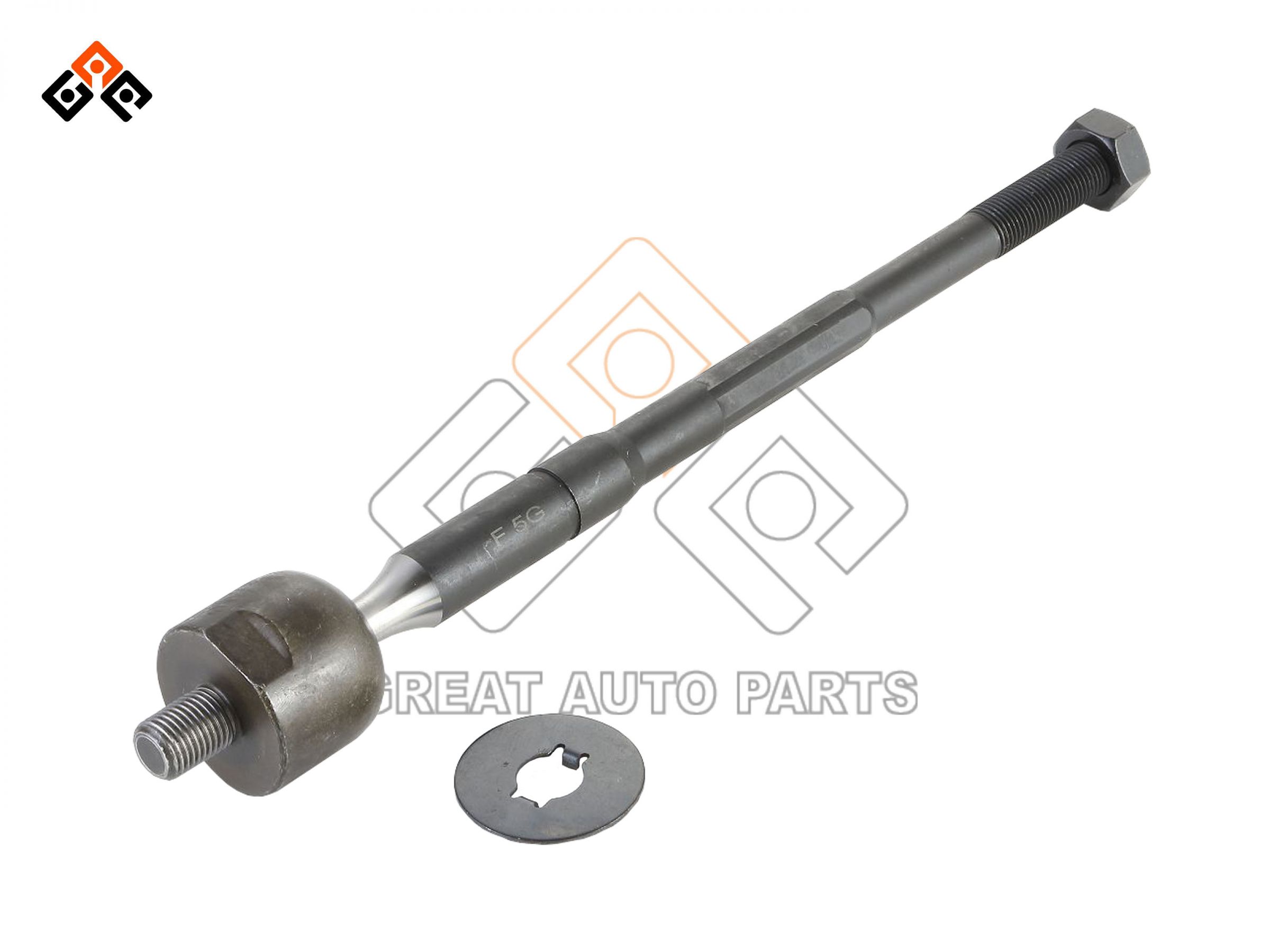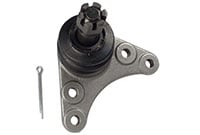Inner and Outer Tie Rods for ISUZU Vehicles: Safe, Reliable, and OEM-Compatible
The inner and outer tie rods are essential to keeping your ISUZU vehicles steering safely and smoothly. At Great Auto Parts, we specialize in providing high-quality, reliable tie rods that ensure precise control and long-lasting performance. Built from durable materials and designed to fit seamlessly into ISUZU models, our tie rods are made to meet the demands of everyday use. Whether you’re looking to improve safety, reduce maintenance, or upgrade your fleet, our tie rods offer the perfect solution for consistent, dependable steering.
What Are Inner and Outer Tie Rods for ISUZU Vehicles
Inner Tie Rods
- Location and Function: The inner tie rod connects directly to the steering rack inside the steering assembly, transmitting steering input from the steering wheel to the outer tie rod. It ensures that the wheels turn accurately when force is applied.
- Smooth Movement: The inner tie rod uses an inline ball joint to facilitate smooth turning motion, which is crucial for precise vehicle handling.

Outer Tie Rods
- Location and Function: The outer tie rod connects to the steering knuckle, which is attached to the wheel hub. This component is responsible for translating the force from the inner tie rod into the physical movement of the wheels.
- Steering Precision: Outer tie rods directly affect the vehicle's turning ability, allowing the wheels to rotate smoothly left or right based on driver input.

Why Are Inner and Outer Tie Rods Important for ISUZU
Inner and outer tie rods are vital components in a vehicle’s steering system. ( external link : https://www.howacarworks.com/basics/how-the-steering-system-works#:~:text=The%20steering%20system%20converts%20the,to%20steer%20a%20heavy%20car.)They ensure smooth, responsive handling, making them essential for vehicle safety and performance, especially in commercial ISUZU models. When tie rods wear out, drivers may experience poor steering control, which can be dangerous and lead to costly repairs.
Features of Our Tie Rod End for ISUZU
Our tie rod ends for ISUZU vehicles are developed from OEM samples to ensure the highest quality and perfect fit. Here are the standout features:
- Made with High-Strength Steel: Manufactured using cold-forged or hot-forged high-strength steel, ensuring durability and performance that meet or exceed OEM standards.
- Anti-Rust Surface Treatment: A specialized surface treatment provides excellent rust protection, prolonging the life of the tie rods in various weather and road conditions.
- Laser Etched Batch Codes: Each part is laser-etched with a manufactured tracking batch code, ensuring traceability and accountability in production quality.
- Superior Strength: Our tie rods boast pull or push-out strength that matches or surpasses OEM standards, offering enhanced reliability and safety.
- Direct OE Replacement: These parts are designed to fit seamlessly as OE replacements, eliminating any fitting issues during installation.
- Low Minimum Order Quantity (MOQ): For B2B clients, we accept small order quantities, with a MOQ as low as 30 pieces, making it convenient for businesses of all sizes.
How to Know When It’s Time to Replace Your Tie Rods
Common Signs of Wear
- Loose Steering: If you notice a "play" in your steering wheel or feel a lack of responsiveness when turning, it may indicate that your tie rods are worn.
- Unusual Noises: Clicking or clunking sounds while steering or turning can point to worn tie rods, indicating it's time for a replacement.
- Uneven Tire Wear: Bad tie rods can cause misalignment, leading to uneven tire wear, which is a tell-tale sign of a steering problem.
Replacement Tip: It’s recommended to replace both inner and outer tie rods at the same time to maintain balanced wear and optimal performance.

Do You Need an Alignment After Replacing Tie Rods
The Short Answer: Yes!
After replacing your tie rods, an alignment is crucial to ensure the wheels are properly aligned with the steering system. Misaligned wheels can cause uneven tire wear, poor handling, and further damage to other components. Proper alignment ensures safe and efficient vehicle operation.
What Happens if Your Inner or Outer Tie Rod Fails
- Loss of Steering Control
If a tie rod breaks or becomes too worn, you could lose the ability to steer the vehicle, creating a highly dangerous situation. This could lead to accidents, especially at high speeds or in difficult driving conditions. - Clunking and Vibration
Worn tie rods can cause clunking noises, especially when turning or going over bumps. Vibrations at higher speeds are also a common symptom, as the wheels become misaligned and unstable.
Bad Tie Rods Cause Vibrations at High Speeds
worn or damaged tie rods can contribute to vibrations. This occurs because the wheels may oscillate more than usual due to excessive play in the tie rods. The vibrations tend to be more pronounced at higher speeds, making it uncomfortable and unsafe to drive.
Proper Tightening of Tie Rod Ends
Torque Specifications for ISUZU Tie Rods
Tie rod ends must be tightened according to the vehicle's specific torque requirements—typically around 35-40 ft-lbs. It is important to follow the manufacturer’s recommendations to avoid issues like steering instability or premature wear.
Risks of Over-Tightening
Over-tightening tie rods can damage the steering knuckle or the rack and pinion system, leading to further issues with vehicle alignment and performance. Always ensure you tighten the tie rods to the correct specifications.
Why Should You Replace Both Inner and Outer Tie Rods at the Same Time
- Enhanced Performance
Replacing both inner and outer tie rods together ensures that the steering system functions optimally, with balanced wear and enhanced steering precision. - Cost Savings
Although replacing both tie rods simultaneously may initially seem more expensive, it saves costs in the long run. You reduce the need for repeated labor and frequent alignments by handling both replacements in one go. - Increased Safety
New tie rods provide better control over the steering system, making driving safer. For ISUZU vehicles, where reliability is paramount, having both inner and outer tie rods replaced together improves vehicle stability.
Can Tie Rods Be Adjusted
Yes, tie rods can be adjusted to fine-tune your vehicle’s alignment. Adjustments are typically made during a professional alignment service, where the angle of the wheels (toe angle) is adjusted to meet manufacturer specifications. This ensures optimal handling, steering response, and tire wear.
High-Quality Inner and Outer Tie Rods for ISUZU – Key Features
- OEM-Grade Durability: Our tie rods are manufactured using high-quality materials and advanced CNC machining technology, ensuring durability and precision in all conditions.
- 2-Year/50,000 KM Warranty: All our tie rods come with a warranty, providing peace of mind for your business and ensuring long-term reliability.
Why Choose Great Auto Parts for ISUZU Tie Rods
- Over 30 Years of Expertise: With decades of experience in manufacturing steering and suspension components, we are a trusted supplier of high-performance parts.
- Custom Solutions for B2B Buyers: We offer tailored solutions for bulk orders, ensuring our clients receive parts that meet their exact specifications.
- Commitment to Quality : From CNC machining to Smart Factory Management 4.0, we prioritize precision and quality in every part we produce.
Order Inner and Outer Tie Rods for ISUZU Today
Contact us for bulk orders or custom specifications tailored to your business needs. You can also request a free sample to evaluate our product’s quality before placing a large order
FAQ: About Inner and Outer Tie Rod of Isuzu
Q1: What is the difference between an inner and outer tie rod for ISUZU vehicles?
A1: The inner tie rod connects to the steering rack and helps transmit the steering input to the outer tie rod, which in turn connects to the steering knuckle. The inner tie rod ensures smooth steering, while the outer tie rod allows the wheels to turn left or right. Both are critical for ISUZU vehicles' steering systems, and replacing them with OEM inner and outer tie rods for ISUZU ensures reliability.
Q2: How often should inner and outer tie rods be replaced on ISUZU trucks?
A2: It's recommended to inspect the inner and outer tie rods on ISUZU trucks during regular maintenance, typically every 12,000 to 15,000 miles. If you notice symptoms like loose steering or uneven tire wear, it's time to replace them. Regular inspection helps prevent costly repairs and ensures your fleet’s safety.

Q3: Should I replace both inner and outer tie rods at the same time for my ISUZU fleet?
A3: Yes, replacing both inner and outer tie rods at the same time for ISUZU vehicles ensures balanced wear and optimal performance. Replacing them together helps avoid future steering issues, reduces labor costs, and improves vehicle alignment, ensuring a smooth operation for your fleet.








